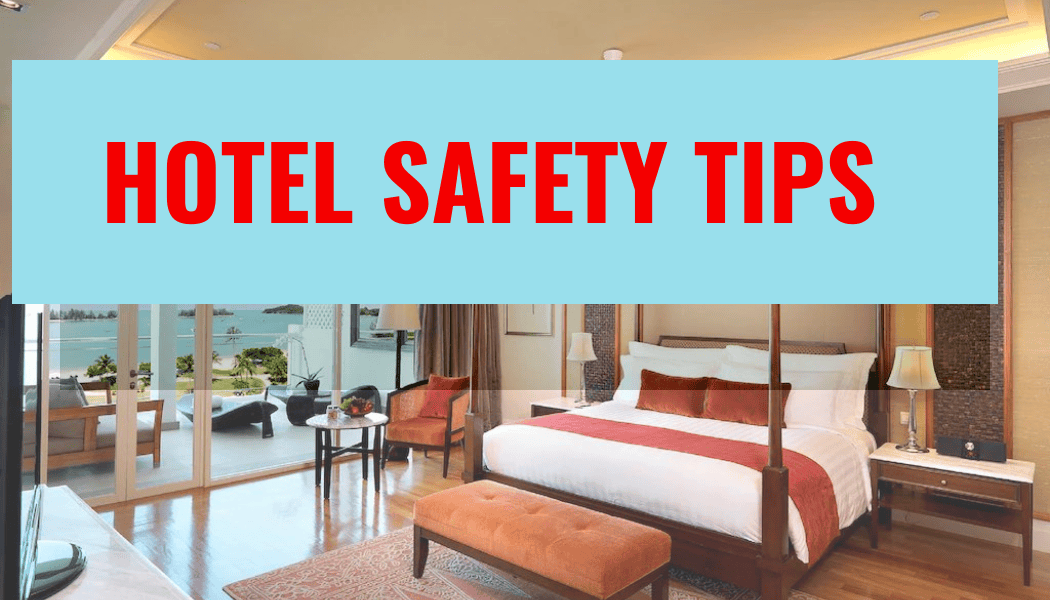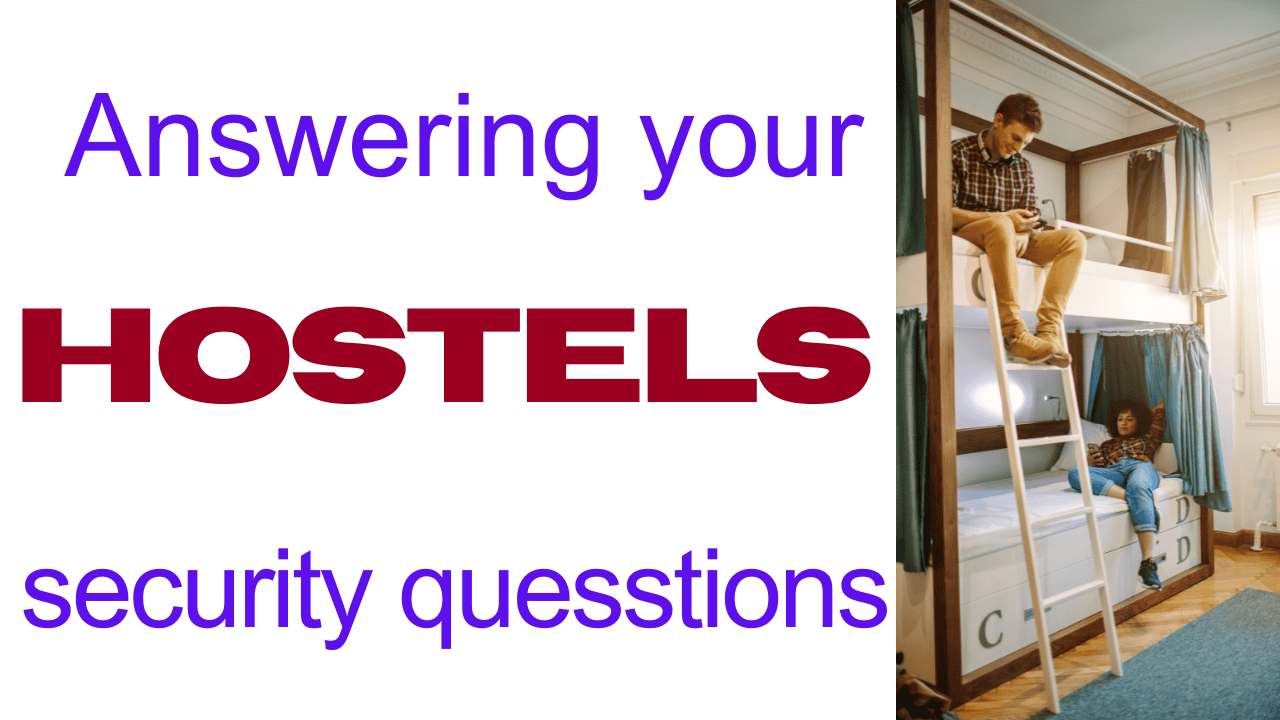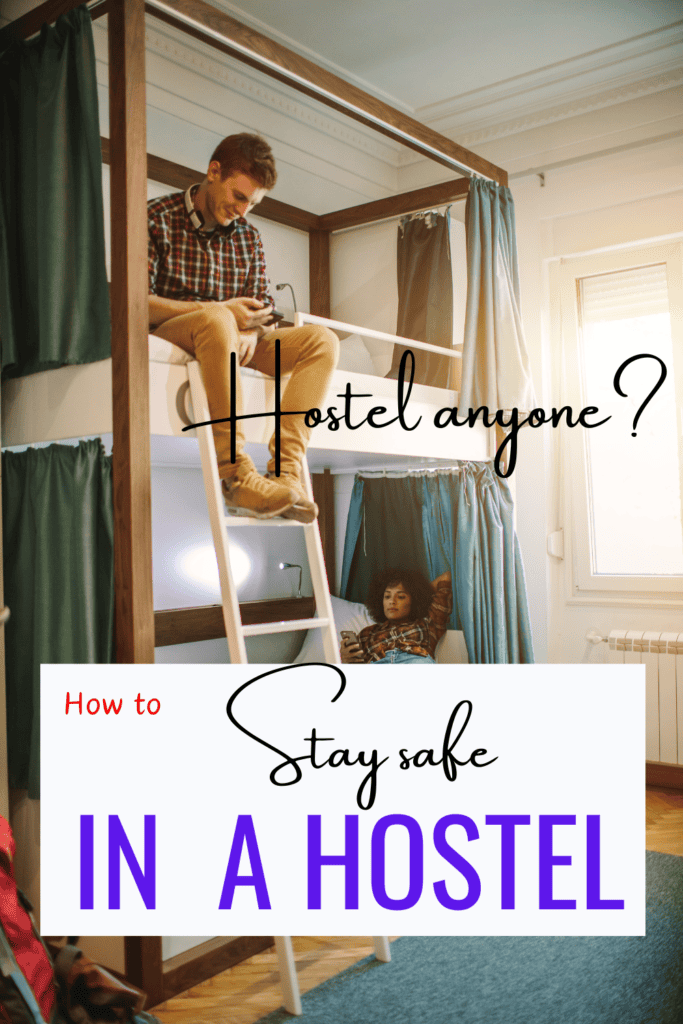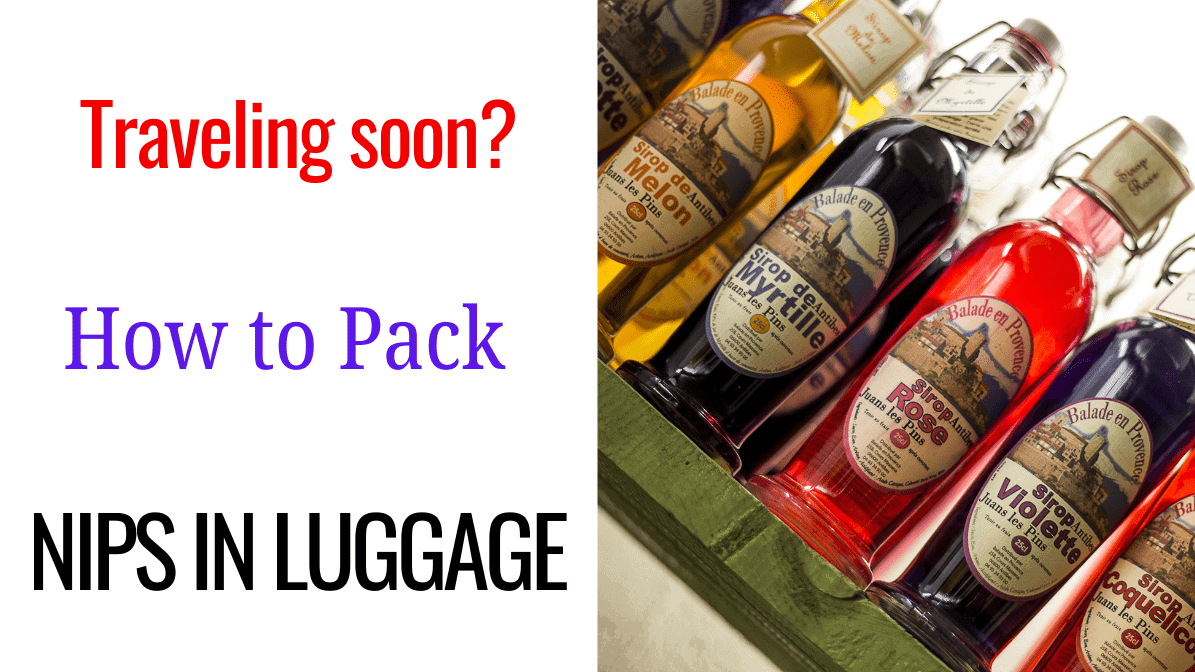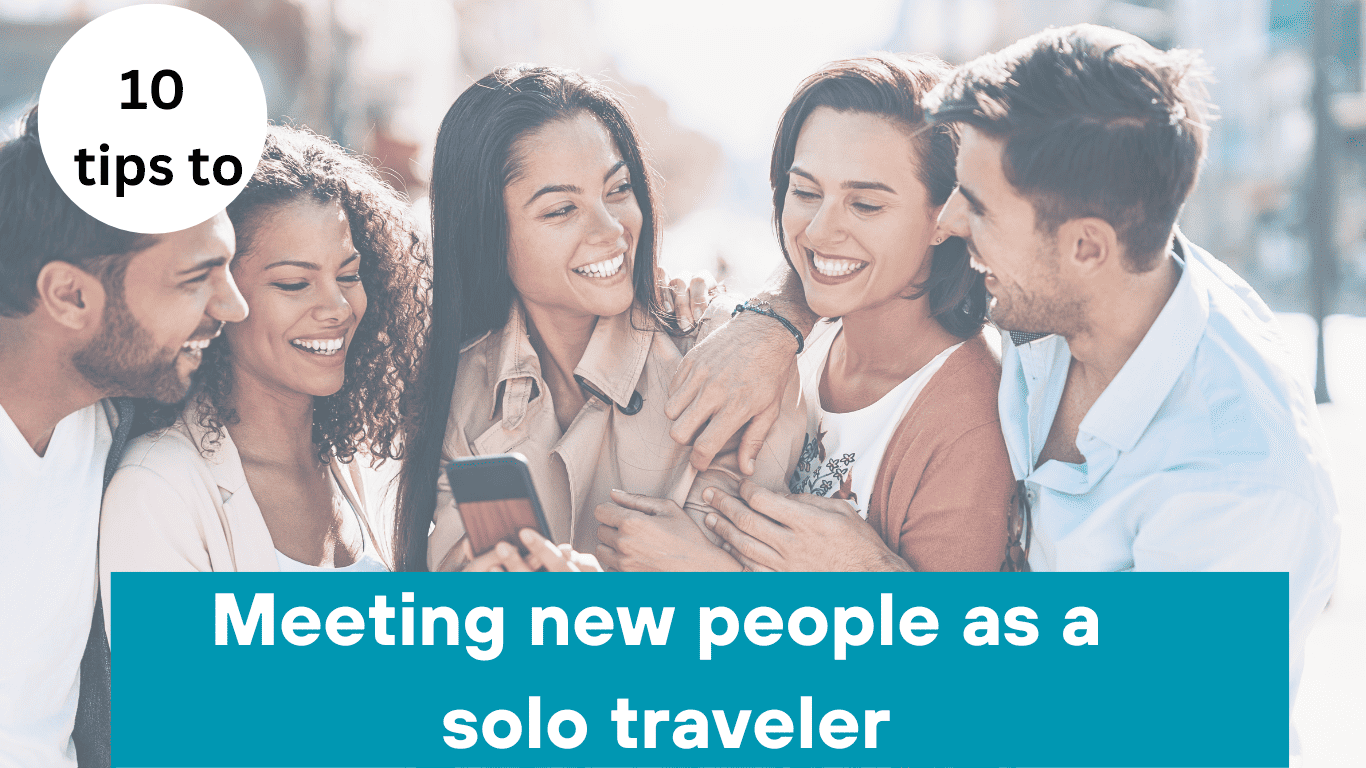Traveling alone can be exciting but also a bit scary. Hotels are often seen as safe places, but it’s important to stay alert even there.
Knowing simple hotel safety strategies can make a huge difference in protecting you during solo trips.
Whether you’re staying in a budget hotel or luxury resort, these tips will help you avoid common risks and enjoy peace of mind.
You deserve to feel secure when exploring the world on your own. Our list of 23 hotel safety tips covers everything from choosing the right accommodation to handling emergencies while traveling solo.
These practical suggestions will help you create a personal safety plan for your next adventure, it`s not only about the right hotel but what safety experts suggest.
Choosing the Right Accommodation
Your choice of accommodation can make or break your solo travel experience. Smart selection focuses on location safety, hotel security features, and strategic room positioning to maximize your protection.
Solo travel safety tips does not end with the hotel you choose, but the most important things to do once you check into the hotel.
Prioritizing Safe Locations
Research neighborhoods before booking. Look for areas with low crime rates and good reviews from other solo travelers. Use reliable travel websites and forums to gather information about safe districts.
Avoid accommodations in isolated areas or places known for high crime. Instead, choose hotels in well-lit, busy neighborhoods with plenty of foot traffic, even at night.
Stay close to public transportation for easy movement without long walks alone. Many cities have tourist-friendly zones that maintain better security and surveillance,case of an emergency.
Consider proximity to town centre, police stations, hospitals, or other emergency services. This isn’t about being paranoid, but about making smart choices that reduce risk.
Evaluating Hotel Safety Features
Look for hotels with 24-hour front desk service and security personnel. These provide constant surveillance and someone to contact if problems arise.
Check for modern security systems like:
- Key card access to rooms and elevators
- Working surveillance cameras in hallways and common areas
- Well-lit corridors, parking areas, and entrances
- Secure door locks with deadbolts or chain locks
- hotel room safes
Read recent reviews specifically mentioning security aspects. Other travelers often note when they felt unsafe or when security was particularly good or if they felt alarmed for safety reasons.
Larger chain hotels typically invest more in security features than small, independent properties.
However, boutique hotels in safe areas can offer personalized attention that enhances safety.
Selecting a Room Position
Request a room between the second floor and 6th floors. This balances safety from break-ins (not ground level or first floor) while remaining accessible in emergencies (not too high) in an event of a fire.
Avoid rooms near emergency exits or stairwells, as these provide easier access for potential intruders. Rooms near elevators offer quicker access but may be noisier.
Choose a room away from the main entrance of the hotel. Interior-facing rooms that overlook courtyards rather than streets provide additional security.
Not being paranoid, but room location can make a difference in your feeling safe, so extra precautions are ok.
Always inspect door and window locks immediately upon check-in. Report any issues with locks, phones, or safety features to management immediately for correction.
Preparing for Your Solo Travel
Smart preparation before your trip creates the foundation for a safe and enjoyable hotel experience. Taking time to research and plan ahead can prevent many common safety issues.
Researching Local Safety Norms
Before booking your hotel, research the safety situation in your destination. Check travel advisories from reliable government websites for current safety information about your destination country.
Look up the neighborhood where you’re planning to stay and read recent reviews from other solo travelers.
Join solo travel forums or social media groups to ask specific questions about hotel safety in your destination.
Fellow travelers often share valuable insights about which areas to avoid, especially after dark.
Make digital copies of your important documents. Store your passport, travel insurance details, and hotel reservations in a secure cloud service you can access from anywhere.
Purchase comprehensive travel insurance that covers medical emergencies, theft, and trip cancellations.
Many policies now offer 24/7 assistance services specifically designed for solo travelers.
Tell someone you trust about your itinerary. Share your hotel details, check-in dates, and rough daily plans with a family member or friend.
Check-in and First Impressions
Your first moments at a hotel set the foundation for a safe stay. Being alert during check-in and carefully examining your room can prevent many safety issues before they arise.
Interacting with Hotel Staff
Build a good relationship with front desk staff as they’re your main point of contact in emergencies.
When checking in, avoid loudly stating your room number where others might hear.
Ask for a room that isn’t on the ground floor if possible, as these are easier targets for break-ins.
Don’t accept help with luggage from people who don’t have clear hotel identification.
If someone claims to be hotel staff at your door, call the front desk to verify before letting them in.
Make note of staff shift changes so you know when different people will be on duty. This is especially important if you’ll be returning late at night.
Assessing Initial Room Safety
Once in your room, the first thing is to conduct a brief safety check before settling in.
Test that your door locks properly and use all available security measures like deadbolts and door chains. Familiarize yourself with the emergency exit plan posted on your door.
Check that the phone works by calling the front desk. The last thing you want is trying to call the front desk later only to realize the room phones are not even connected.
Verify the peephole functions correctly and isn’t damaged or blocked.
Look for potential hiding spots like behind curtains or under the bed. While this may seem excessive, it only takes seconds and provides peace of mind.
Check that your room has smoke detectors.
Make sure windows lock securely, especially if you’re on a lower floor. If any safety features are broken or missing, request a different room immediately.
Your comfort and security are valid reasons for a room change.
Some people(especially those staying in Airbnb) have complained of hidden cameras, check that your room does not have any security cameras installed.
Enhancing In-Room Security
Your hotel room should be your sanctuary while traveling solo. Taking proactive steps to secure your temporary living space can significantly reduce potential risks and give you peace of mind.
Using Additional Door Locks
Always use every lock available on your hotel room door. This includes the deadbolt, security chain, and swing bar lock. These built-in features are your first line of defense.
Consider packing a portable travel door lock or door stop alarm. These inexpensive devices add an extra layer of security that prevents the door from opening, even with a key card or master key.
For sliding doors or windows, a rubber doorstop or portable door jammer works well. Simply wedge it firmly in place before going to sleep or leaving the room.
Test all locks upon arrival to ensure they function properly. If any lock is broken, request a room change immediately rather than accepting the risk.
Utilizing the Do Not Disturb Sign
Hang your “Do Not Disturb” sign whenever you’re in the room. This simple action prevents unexpected knocks and entry attempts that might catch you off guard.
The sign also creates uncertainty about your presence, making your room a less appealing target for potential intruders. Would-be thieves typically avoid rooms that might be occupied.
When leaving for extended periods, consider leaving the sign up and the TV on at a low volume. This creates the impression someone is in the room.
Be aware that some hotels have policies about how long you can use the sign. Check with the front desk if you plan to use it continuously.
Managing Room Service and Housekeeping
Verify the identity of anyone who knocks on your door. Look through the peephole before opening, or call the front desk to confirm if housekeeping or maintenance was scheduled.
Don’t open your door to unexpected visitors. If someone claims to be staff, call the front desk to verify before letting them in.
Consider scheduling housekeeping for times when you plan to be out of the room. This allows you to secure your valuables properly before staff enters.
Keep conversations with room service or housekeeping staff professional. Avoid sharing details about your travel plans, how long you’re staying, or that you’re traveling alone.
If you feel uncomfortable with someone at your door, don’t hesitate to call the front desk or security immediately.
Personal Safety Practices
Your personal safety is in your hands when traveling solo. Good safety habits and awareness can make a significant difference in your hotel experience.
Securing Your Belongings
Always use the in-room safe for valuable items like passports, extra cash, and expensive electronics. If no safe is available, consider using a portable travel lock box.
Keep your room key separate from any identifying information. If you lose a key with your room number attached, someone could easily access your belongings.
Use a doorstop alarm when sleeping. This simple device makes it harder to open your door and sounds an alarm if someone tries to enter.
Consider bringing a lightweight cable lock to secure bags to fixed furniture when you leave the room. This prevents quick grab-and-go theft.
Take photos of important documents and store them in secure cloud storage. This ensures you have digital backups if physical copies are lost or stolen.
Trust Your Instincts
Your intuition is a powerful safety tool. If something feels wrong about a situation or person, don’t dismiss the feeling. Listen to your gut.
Be cautious of oversharing travel details with strangers. Avoid mentioning you’re traveling alone or revealing your room number in public spaces.
Change your walking routes occasionally, especially if staying multiple nights. Predictable patterns make you an easier target.
Solo female travelers should consider booking rooms on higher floors (not ground level) and away from stairwells. These locations generally offer more security.
If someone makes you uncomfortable, don’t worry about being polite. Your safety matters more than others’ feelings. Move to a public area or alert hotel staff immediately.
Staying Safe in Public Areas
Hotel common areas are where you’ll encounter the most strangers during your stay. Being vigilant in these spaces while also establishing rapport with hotel staff creates a safety network for solo travelers.
Awareness in Communal Spaces
Always maintain awareness of your surroundings in hotel lobbies, restaurants, and other public areas. Keep your valuables close to your body using a cross-body bag or money belt when moving through these spaces.
Avoid displaying expensive items like jewelry, electronics, or large amounts of cash in public areas. This makes you less of a target for opportunistic theft.
Choose seats with your back to a wall when in hotel bars or restaurants. This gives you a clear view of the entire space and prevents others from approaching unnoticed.
Be cautious about sharing personal details with strangers you meet in public areas. Avoid mentioning you’re traveling alone or which room you’re staying in.
Use hotel business centers during daylight hours when more people are around. Never leave your devices unattended, even for a minute.
You may like:
Best anti theft cross body bags for travellers
Nurturing a Connection with the Staff
Introduce yourself to front desk staff and other hotel employees. They can become valuable allies who recognize you and notice if something seems amiss.
Ask hotel staff about areas to avoid both inside and outside the property. They have local knowledge that can help you stay safe during your stay.
Let the front desk know your general plans when leaving the hotel for extended periods. This creates an informal check-in system for your safety.
Use staff services like room service or bellhop assistance when you feel uncomfortable. This is especially helpful if you return late at night.
Trust your instincts – if something feels wrong, notify hotel staff immediately. Most establishments have security protocols to handle various situations.
Emergency Situations
Being prepared for emergencies while staying at hotels can make all the difference in your safety.
Knowing what to do and where to go before a crisis happens gives you precious time when seconds count.
Locating Emergency Exits
Always identify all emergency exits immediately after checking into your hotel room.
Take a few minutes to walk the hallways and find at least two exit routes from your room.
Count the number of doors between your room and the nearest emergency exit – this will help you navigate in darkness or smoke.
Quick exit location tips:
- Check the map on your hotel room door
- Physically walk to each exit to confirm its location
- Notice if exits are alarmed or locked at certain hours
- Identify stairwells that lead directly outside
Take a photo of the emergency exit map with your phone for quick reference. This simple step might seem unnecessary but can be invaluable during an actual emergency.
Reviewing Evacuation Procedures
Most hotels post evacuation procedures inside your room door or in the guest information booklet.
Read these carefully even if you’ve stayed at many hotels before. Each property has unique evacuation routes and assembly points.
Key evacuation details to note:
- Assembly point locations outside the building
- Whether to use elevators (usually not recommended)
- How to report that you’ve safely evacuated
- Special instructions for guests with mobility issues
Practice mentally walking through the evacuation steps. In case of fire, stay low to the floor where air is clearer.
If you can’t leave your room, seal door cracks with wet towels, call for help, and signal from your window.
Technological Safety Measures
Modern technology offers powerful tools to enhance your safety while traveling alone.
These digital resources can both protect your personal information and help you maintain contact with loved ones during your journey.
Digital Privacy
Always use a VPN (Virtual Private Network) when connecting to public Wi-Fi networks in hotels. This encrypts your data and prevents hackers from accessing your personal information.
Set up two-factor authentication for your important accounts like email, banking, and social media. This adds an extra security layer even if someone discovers your password.
Be cautious about what you share online. Avoid posting your exact location in real-time, especially if you’re traveling solo.
Wait until you’ve left a location to post photos from there.
Regularly check your devices for unfamiliar apps or suspicious activity.
Update your phone and laptop software before your trip to ensure you have the latest security patches.
Staying Connected
Create a check-in schedule with a trusted friend or family member. Send them your itinerary, hotel information, and planned activities before departure.
Download offline maps of your destination before traveling. This allows you to navigate without needing an internet connection or revealing your location data.
Consider portable chargers or power banks as essential safety equipment. A dead phone can quickly become a safety risk when you’re alone in an unfamiliar place.
Use location-sharing apps like “Find My Friends” or “Life360” with trusted contacts. These allow someone to track your movements if necessary.
Research international calling options before you leave.
Either activate an international plan or download apps like WhatsApp that work over Wi-Fi for emergencies.
Navigating Local Excursions
Exploring beyond your hotel requires careful planning and awareness of your surroundings.
Your safety during local excursions depends on both communication and respect for local customs.
Communicating Your Itinerary
Always inform someone trustworthy about your daily plans. Before leaving your hotel, share your intended destinations and expected return time with the front desk staff.
Use the hotel’s business card or take a photo of the address in the local language. This helps if you need to show a taxi driver where to return you.
Consider using location-sharing apps with a trusted friend or family member back home. Apps like Find My Friends, WhatsApp, or Google Maps allow real-time tracking.
Set check-in times with contacts at home. A simple text saying “I’m back at the hotel” provides peace of mind for everyone.
Adhering to Cultural Norms
Research local customs before your trip. Understanding appropriate dress codes and gestures prevents unwanted attention and shows respect.
Observe how locals interact and dress. If women typically cover their shoulders or men avoid shorts, follow these practices to blend in better.
Learn a few basic phrases in the local language. Simple words like “hello,” “thank you,” and “help” can improve your travel experience and safety.
Be mindful of photography rules. Some locations prohibit photos, while others require permits or payments. Always ask before taking pictures of people, even in a public place.
Watch locals’ body language and behaviors in public spaces. This helps you recognize potentially unsafe areas or situations that residents avoid.
Health and Medical Preparedness
Staying healthy during solo travel requires preparation and awareness of local medical options.
Having access to healthcare resources and your necessary medications can make a critical difference in emergency situations.
Knowing Local Health Resources
Before arriving at your hotel, research nearby medical facilities. Save the locations and contact information of the closest hospital, urgent care center, and pharmacy in your phone.
Many hotels maintain a list of trusted doctors who can make house calls. Ask the front desk for this information when you check in.
Learn how to say basic medical terms in the local language, such as “I need a doctor” or “pharmacy.”
This knowledge becomes invaluable during emergencies when translation apps might not be accessible.
Consider purchasing travel health insurance if your regular policy doesn’t cover international care. Keep digital and physical copies of your insurance information readily available.
Carrying Essential Medications
Pack all prescription medications in their original containers with labels intact. Bring enough to last your entire trip, plus extra in case of unexpected delays.
Prepare a small medical kit with common items like:
- Pain relievers
- Bandages and antiseptic wipes
- Anti-diarrhea medication
- Motion sickness remedies
- Any personal medications you regularly use
Research the legality of your medications at your destination. Some common prescriptions in your home country might be restricted elsewhere.
Keep a card in your wallet listing your medical conditions, allergies, and medications.
This information helps healthcare providers treat you properly if you’re unable to communicate.
Store medications in your carry-on luggage, not checked bags, to prevent loss during transit.
After Your Stay
Leaving your hotel safely and sharing your experience are final steps in ensuring a complete safety strategy.
Your actions after checkout can impact both your current safety and help other travelers.
Ensuring Safe Departure
When preparing to leave your hotel, pack your belongings the night before to avoid rushing and possibly forgetting important items.
Double-check all drawers, closets, and bathroom areas. Don’t leave personal information on notepads or in trash bins.
Request a final bill review before checkout to spot any unauthorized charges. If possible, avoid early morning departures when streets might be less populated.
Ask the front desk to arrange transportation directly to your next destination. Wait in the lobby rather than outside if your ride isn’t immediately available.
Return your key card to the front desk rather than leaving it in the room. This prevents others from potentially accessing your information or room after you’ve left.
Leaving Feedback for Future Travelers
Your experience can help others stay safe. Take time to write an honest review mentioning any safety concerns or positive security measures you observed.
Be specific about security features that impressed you, such as:
- Well-lit hallways and parking areas
- Responsive security staff
- Reliable door locks and peepholes
- Secure key card systems
If you encountered problems, report them factually without emotional language. Mention if management addressed your concerns appropriately.
Consider joining travel forums where you can share detailed safety tips about specific hotels. These firsthand accounts are invaluable to solo travelers planning their trips.
Remember that hotels often monitor reviews. Your feedback might prompt improvements that make everyone safer.
Frequently Asked Questions
Hotel safety concerns are common among solo travelers.
These practical solutions address door security, women’s safety, essential devices, business travel precautions, and maintaining privacy in unfamiliar accommodations.
What are effective safety hacks for solo travelers staying in hotel rooms?
Always use the peephole before opening your door to visitors. Consider placing a small rubber doorstop against the door for added security at night.
Keep your valuables in the hotel safe rather than leaving them visible in your room.
When possible, request a room between the third and sixth floors—high enough to deter break-ins but low enough for fire ladder access.
Take photos of your room when you arrive and leave to document its condition. This can prevent disputes about damages you didn’t cause.
How can a woman ensure her safety when staying alone in a hotel?
Book hotels in well-reviewed, safe neighborhoods and avoid ground floor rooms. Consider requesting a room near the elevator but not directly next to it for both convenience and reduced isolation.
Use your first initial rather than full first name when booking to maintain gender anonymity.
Don’t announce your room number loudly at check-in—ask the clerk to write it down if needed.
Maintain confidence in public areas—walk purposefully and avoid appearing lost or confused, which can make you look vulnerable.
What safety devices should be considered when traveling alone?
Pack a door alarm that hangs on the doorknob and sounds if someone attempts entry. These portable devices are small, lightweight, and very effective deterrents.
Bring a portable door lock or doorstop alarm for additional security beyond the hotel’s standard locks.
Consider a personal safety alarm that can emit a loud sound if you feel threatened.
A small flashlight or headlamp is essential in case of power outages or emergencies. Some travelers also carry window alarms that activate if glass is broken.
What precautions should business travelers take for hotel safety?
Never display confidential work documents in your room where housekeeping or others might see them.
Be cautious about using hotel business centers for sensitive work—they rarely have adequate security.
Avoid discussing your company, position, or travel schedule with strangers in the hotel. When working in your room, position yourself so your laptop screen isn’t visible to someone entering.
Use your own secure hotspot rather than hotel Wi-Fi for sensitive communications. Consider a privacy screen for your laptop to prevent visual hacking in public areas.
What steps can solo travelers take to secure their hotel room doors?
Check all locks immediately upon entering your room, including deadbolts, chain locks, and window latches.
Report any broken locks to management and request a different room if repairs aren’t possible.
Use the “Do Not Disturb” sign when you’re both in and out of the room to create uncertainty about occupancy. Place a chair or luggage against the door as a physical barrier and noise alarm.
Develop a habit of keeping your key card separate from your room number information. If lost, someone shouldn’t be able to identify which room they can access.
How can one maintain privacy and security in a hotel room as a solo guest?
Draw curtains fully, especially after dark when interior lights make it easy to see inside. Be mindful of shadows that may be visible through thin curtains or blinds.
Keep your television or radio on at a low volume when leaving to give the impression of occupancy.
Minimize sharing details about your travel plans with hotel staff or other guests.
Consider placing the “Make Up Room” sign only when you’re actually leaving for the day. Be careful about posting your location on social media until after you’ve left the hotel.
I hope my top hotel safety tips will help you navigate your travel you can also check our old post on solo travel tips.
